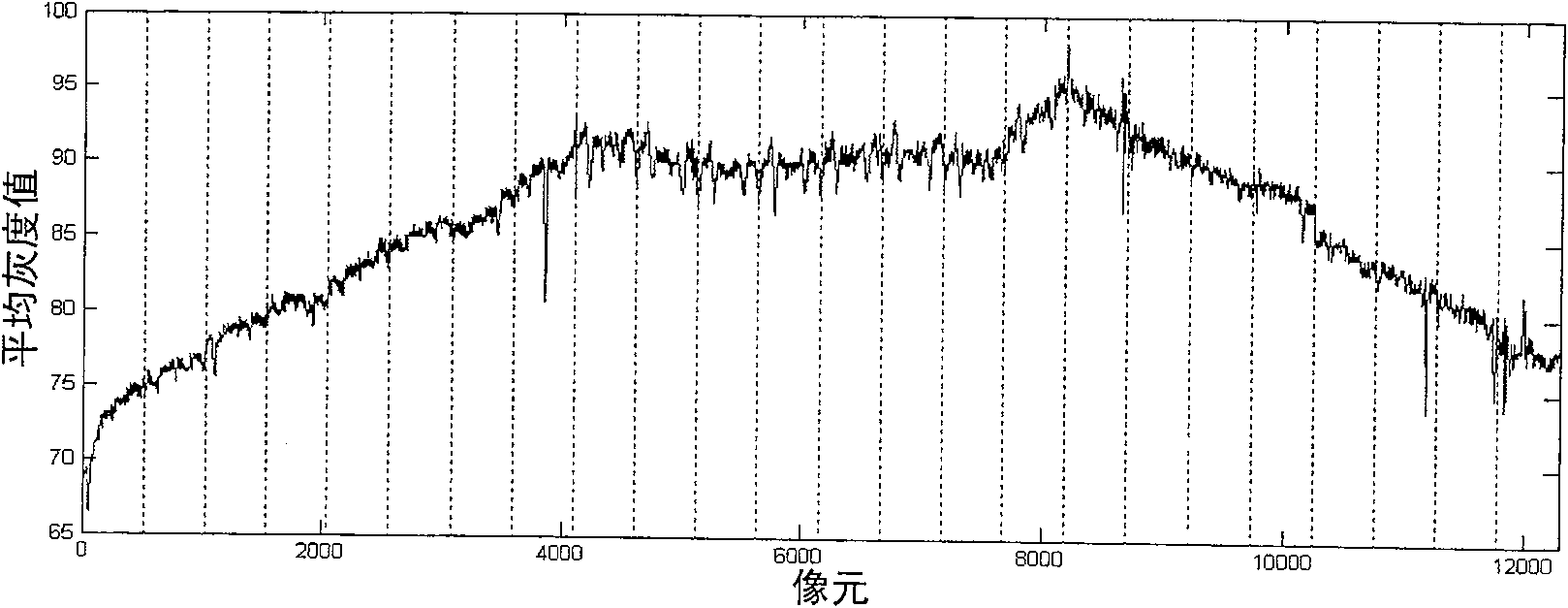Relative radiation correction method for star-load TDICCD camera
A technology of relative radiometric correction and relative radiometric calibration, which is applied in image data processing, instruments, radio wave measurement systems, etc., and can solve problems such as the inability to correct the non-linearity of tap light intensity response
- Summary
- Abstract
- Description
- Claims
- Application Information
AI Technical Summary
Problems solved by technology
Method used
Image
Examples
Embodiment Construction
[0053] The TDICCD of this embodiment has 24 taps in total, each tap has 512 pixels, and there are 12288 pixels in total, assuming that there are images of the camera at p different brightnesses (16 levels in this example), and the image length is n.
[0054] According to the push-broom imaging principle of TDICCD, the radiation calibration data is processed one-dimensionally. Figure 1 shows the grayscale image of the calibration original data and the one-dimensional image of each pixel response at a certain brightness level. Figure 1a Calibrated raw data grayscale image (two-dimensional image) for TDICCD imaging, Figure 1b It is the response map of each pixel after the one-dimensionalization of the two-dimensional image, and the one-dimensionalization process of the data is as follows:
[0055] X i k = 1 n Σ j = ...
PUM
 Login to View More
Login to View More Abstract
Description
Claims
Application Information
 Login to View More
Login to View More - R&D
- Intellectual Property
- Life Sciences
- Materials
- Tech Scout
- Unparalleled Data Quality
- Higher Quality Content
- 60% Fewer Hallucinations
Browse by: Latest US Patents, China's latest patents, Technical Efficacy Thesaurus, Application Domain, Technology Topic, Popular Technical Reports.
© 2025 PatSnap. All rights reserved.Legal|Privacy policy|Modern Slavery Act Transparency Statement|Sitemap|About US| Contact US: help@patsnap.com



